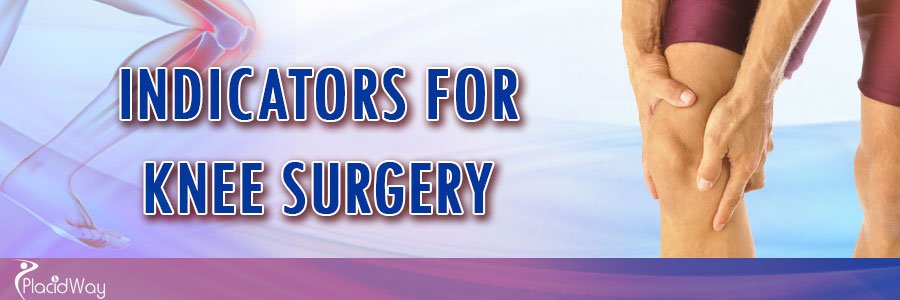Orthopedics Surgery
Professional orthopedics specialties treat such conditions as carpal tunnel syndrome, knee and hip problems, arthritis, and sports injuries e.g., tennis elbow or rotator cuff surgery are treated by orthopedic surgeries. The health and healing of bone and joint injuries as well as those caused by ligament, tendon, or nerve damage are cured by orthopedics care.
Orthopedics surgery is often utilized to promote the health and healing of bone and joint needs associated with a wide variety of orthopedic conditions such as carpal tunnel syndrome, knee and hip problems, arthritis, and shoulder orthopedics to treat sports injuries such as tennis elbow or rotator cuff surgery. The scope of orthopedic specialists enables orthopedic surgeons to treat joint injuries as well as those caused by ligament, tendon, or nerve damage.
Common Orthopedics Procedures
- Hip Replacement Surgery (Partial or Total)
- Hip Joint Resurfacing Surgery
- Knee Replacement Surgery (Partial or Total)
- Hand Surgery
- Elbow Surgery
- Shoulder Surgery
Examples of Orthopedic Care and Treatments
The purpose behind most orthopedic surgical procedures is to increase and enhance mobility of a joint as well as to repair damaged bone, muscular, or neural tissues caused by sports injuries, arthritis, fractures, and muscle and bone diseases. Common orthopedic services and procedures include partial or total hip replacement surgery, as well as hip resurfacing surgery, partial or total knee replacement procedures and those that focus on hands, elbow, or shoulder joints.
Surgical orthopedics and treatments help treat chronic diseases such as various forms of arthritis in the hands, knees and back. For example, rheumatoid arthritis severely inhibits mobility in the fingers and hands. Orthopedic care is designed to relieve pain and increase mobility require a team effort from specialists in orthopedics surgery as well as specialists who focus on the musculature damage such arthritis causes.
Knee problems, such as torn cartilage or tendonitis in the knee joint, caused by sports injuries are often treated with a combination of arthroscopy, or a minimally invasive procedure, or knee surgery.
Orthopedics surgery and treatments may help or repair damage to hip joints caused by traumatic injuries, fractures or osteoarthritis conditions. Such treatments may require surgical procedures to replace broken joints with partial or total artificial joints, as well as the use of pins or braces to hold bone sections together.
Sports injuries such as tennis elbow or baseball elbow may require treatment to repair damage to the tendons that attach muscle to bone at these critical joints in the arm.
Orthopedic services and treatments to reduce deformity and increase mobility of the spine and neck caused by scoliosis, fibromyalgia, bursitis or arthritis are common as well. Orthopedic surgery involves many different techniques and methods for the treatment of hundreds of bone or joint injuries and conditions that limit range of motion or cause pain in men, women and children.
Hip orthopedics, including joint replacement surgeries, has become increasingly common and allow for the total or partial replacement of joints. The use of alternative materials such as plastics, metals, and ceramic implants provides increased mobility in a great percentage of surgery candidates.
Common Orthopedics Surgery Procedures
Orthopedics surgery is generally performed in an operating room setting under general anesthesia. Depending on the procedure, an operation may take anywhere from one to several hours. Operations require incisions, or cuts, to exposed damaged muscles, ligaments, bones, and joints. Sterilized surgical tools designed to scrape away or remove damaged bone tissue or ball joints are used during procedures. Following the procedure, wound areas are sutured with either a traditional surgical threads or surgical staples. Surgical sites may be wrapped or left exposed to facilitate healing. Swelling and bruising is common, following surgical procedures, but will be reduced through proper care and handling within two to three days.
Common knee surgery treatment or hip resurfacing procedure treatments help relieve symptoms and damage caused by rheumatoid arthritis and includes Osteotomy, where a deformed joint is surgically realigned, or a Synovectomy, where inflamed tissues that line the joint are removed. Such procedures heal relatively quickly and serve to alleviate pain and increase mobility in affected joints.
Arthroscopy involves removing particles of bone or tissue cartilage that causes pain and restricts movement. This process involves creating small incisions on each side of the knee. A tiny camera in inserted through one incision, while a thin surgical instrument is inserted in the other. While it is less invasive than Arthroplasty, or joint replacement surgery, common in knee or hip replacements and which involves the removal of damaged bone and surrounding tissues to be replaced with a prosthetic joint, various procedures and severity of conditions will determine which surgical method is used.
Treatment for conditions such as tennis, golf, or baseball elbow involves removing a portion of damaged tendon or releasing the attachment of the affected tendon. The good news is that most patients with tennis elbow can be treated without surgery. A variety of conservative approach treatments should be tried prior to opting for surgery, including rest, anti-inflammatory medications, cortisone injections, brace support and exercises.
Of course, there are many more types of orthopedic care, procedures and surgeries that are performed in the orthopedic field. Depending on the type of orthopedic surgery that your condition calls for, treatments, procedures, as well as healing times will vary.
Benefits of Orthopedic Surgeries
In most cases, recovery from most types of orthopedics surgery is relatively rapid. Depending on the specific type of surgery, recovery time varies from two weeks to four months. Physical and Occupational therapy usually follows any type of orthopedic surgical procedure, which will help restore muscle strength, coordination, and mobility. Some physical therapy is also performed through the use of hydrotherapy and massage.
After orthopedics surgery that addresses a variety of issues, such as partial or total joint replacement, arthroscopy to remove bone or cartilage tissues as well as procedures to relieve pain and loss of movement through osteoarthritis or rheumatoid arthritis, patients can expect a reduction of pain, increased mobility and improved quality of life. Success rates with joint replacement and Arthroplasty are higher than 90%, and longevity of prosthetic implants provide long-term relief.
Finding the Right Doctor
Orthopedic surgeons must pass board certification following oral and written examinations in their native or adoptive countries of origin. For example, in the United States, this is the American Orthopedic Association, the American Academy of Orthopedic Surgeons or the American Board of Medical Specialties.
Following educational courses and exams, most orthopedics specialists are required to complete a four-year residency-training program within a hospital setting. In addition, a resident is required to pass board certification exams prior to being recognized by the America Board of Orthopedic Surgeons. To maintain Board certification, an orthopedics surgeon must test and pass exams given every ten years that insures that continuing education requirements have been met.
Some orthopedics physicians sub-specialize in fields such as sports or trauma medicine, while others specialize in the treatment of arthritis, spinal cord or congenital defect diseases or conditions. Such physicians are called rheumatologists. A rheumatologist typically has a background in internal medicine and should be certified by a country or State Board of Internal Medicine.
No matter where you live, you should be able to check the credentials of any physician or surgeon through a State, Provincial or National Board of Orthopedic Surgeons to find information about any particular physician, surgeon or specialist in various orthopedic treatment and surgical fields.













